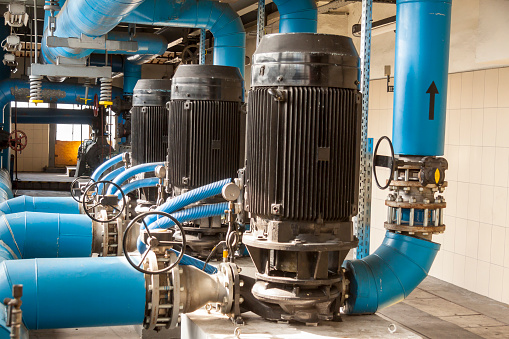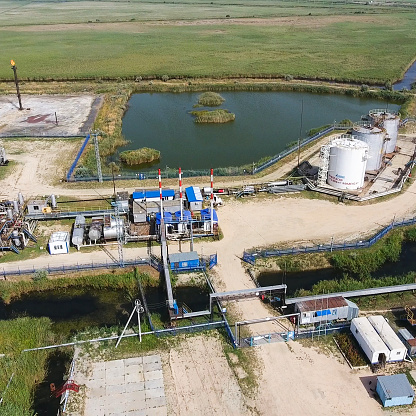If this is your first time purchasing a condensate pump, you will likely find the enormous selection somewhat intimidating. You're probably wondering, "What can a condensate pump do for me?" Am I even in need of a condensate pump? And besides that, what's wrong with condensate? Luckily, as with most matters in the pumping industry, you can make a solid purchase for your heating system by studying a few fundamental factors after being informed. Here is how to choose a reliable AC condensate pump.
What is the function of a Condensate pump?
To choose a good ac condensate pump, you must first understand its role and functions. Dehumidifiers, drinking fountains, soda machines, and ice makers all generate condensate that, if not eliminated, will build and cause harm. Considerable temperature control and refrigeration systems frequently generate substantial condensate that must be continuously drained and disposed of. The purpose of condensate pumps is to transport water produced by moisture-sensitive equipment to a holding tank before directing it to a sewer or drain. The storage tank gathers condensate liquid until it reaches a level that triggers the pump till the liquid level in the tank decreases.

Selecting a Condensation Pump
Before selecting a condensate pump, confirm whether your application depends on local condensate handling and disposal requirements. Choose a model that adheres to these standards. Determine the lift needed for the pump by specifying the pump's mounting location and discharge location. Unless a maximum or "shut-off" lift is reached, condensate flow will decline proportionally to the height it must go. Choose a pump with an appropriate maximum lift rating for your application. Go through the service handbook for your machine to establish the condensate output, and select a pump with adequate resources. As a rule of thumb, the pump's output flow should be at least double that of the appliance's input.
Confirm your voltage specifications. Many pumps are produced in 115 or 230V. Various commercial-grade pumps are available in 460V. Pick a good condensate pump with an alarm or auxiliary switch backup system, or install one with your pump, if property destruction or personal injury can arise from a malfunctioning or leaky pump.

Condensate pumps are offered in centrifugal, peristaltic, and other designs, with sizes ranging from fractional horsepower units to massive industrial pumps that recycle condensate water within a system. Small condensate pumps often discharge into a sewer or drain. Since condensate water can be extremely hot and include acids and other toxins, local regulations may require cautious handling and disposal. Condensate pumps often offer years of trouble-free operation when installed and maintained correctly. Pump Products maintains a stock of high-quality condensate pumps and accessories for various applications.
More factors to consider when picking a condensate pump
If the condensate pump is utilized in a residential system, the required operating power is often less than 60 kW. Search for pumps powered by 50 to 90 kilowatts, and you will not be disappointed. Additionally, you need to think about the following:
1. Does the condensate pump include an alert for overflow?
The majority of high-quality condensate pumps will include an overflow safety switch. Such can be linked to the condensate boiler and configured to shut it down in the event of an alarm.
2. Does the shaft of the condensate pump consist of stainless steel?
If not, you can be certain that the pump's construction is subpar, and you will need to replace it sooner than you'd want.
3. Are the socket and cord of the condensate pump long enough?
Can the power cord and plug reach the wall sockets? If not, you will be forced to get a different pump.
When picking out a new condensate pump, it is essential to have an accurate head measurement, GPM (gallons per minute), HP (horsepower), and voltage rating. In addition, the optimum sizing of a pump's head volume and lift is essential for its longevity and for reducing its power consumption over its lifetime. Following is a summary of these four elements and pertinent information regarding condensate pumps.
- The pump head is the utmost height a pump can convey liquid to its exit. The weight of the liquid above the pump mechanism exceeds the forces trying to turn the pump or move the piston or diaphragm. Measuring vertically from the pump outlet to where gravity takes over in the drain line provides a precise head measurement.
- GPM is 2-to-3 times the system condensing rate. On more giant condensate tanks, a heat balance should be reviewed—oversizing permits the pump to run for 13 to 12 an hour at full load. To determine how much condensation your furnace produces, consult the instruction booklet. Put a bucket underneath the furnace's drain and observe the quantity of water generated in 60 minutes to determine GPM.
- The pump head and GPM determine horsepower. Residential condensate pumps range from 1/30 to 1/50 horsepower. Light commercial and more extensive HVAC systems may need a 1/3 HP pump and larger bins. As horsepower grows, so do GPM and head pressure.
Most household applications require 115V or 120V. 230V pumps are available with the same or greater horsepower than 115V/120V pumps for larger systems or unique applications.
Final Thoughts
Selecting a condensate pump for your air conditioning unit may appear challenging, mainly if you are new to the HVAC industry. Numerous pumps and installation alternatives are available on the market, each with distinct characteristics, brands, and costs. The type of condensate pump is entirely dependent on your specifications and installation location. Nevertheless, the guidelines provided in this post can assist anyone in picking their ideal pump for their AC unit.





